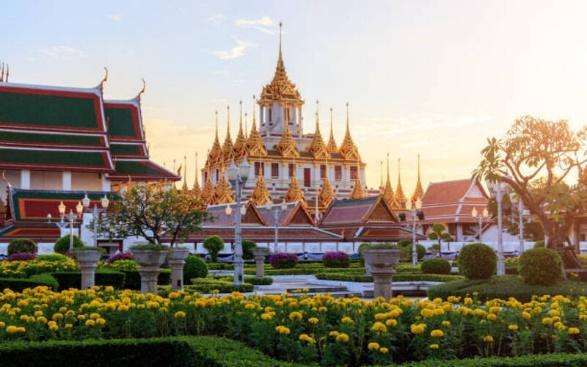Nestled in the heart of Peru’s Sacred Valley, Maras and Moray are two captivating destinations that offer a glimpse into the ancient ingenuity and culture of the Inca civilisation. These sites, each with its unique charm and historical significance, are must-visit locations for any traveller exploring Peru. This guide provides a comprehensive overview of what you can expect when visiting Moray and Maras, helping you plan an unforgettable journey.
Introduction to Moray and Maras
Moray is renowned for its archaeological significance, featuring terraced circular depressions that were once used for agricultural experiments by the Incas. These terraces create microclimates, enabling the cultivation of a variety of crops at different temperatures. On the other hand, Maras is famous for its ancient salt mines, where salt has been harvested using traditional methods for centuries. These two sites, while close in proximity, offer distinctly different experiences, making them an ideal combination for a day trip.
Getting to Moray and Maras
Maras and Moray are located approximately 40 kilometres northwest of Cusco, making them easily accessible from the city. The journey typically involves a scenic drive through the Sacred Valley, offering stunning views of the Andes Mountains and local villages.
- By Car: Hiring a car or taking a taxi is a convenient option, allowing flexibility in your schedule.
- By Tour: Many tour operators in Cusco offer guided tours to Moray and Maras, providing valuable insights into the history and significance of these sites.
- By Public Transport: For budget travellers, public buses and colectivos (shared vans) are available, although they may require some walking or additional transport to reach the sites directly.
Exploring Moray
Upon arrival at Moray, you will be greeted by the sight of large circular terraces, which resemble a Greek amphitheatre. These terraces descend in concentric circles, with each level having its own microclimate.
Highlights of Moray
- Agricultural Laboratory: The Incas ingeniously designed these terraces to experiment with different crops. The temperature variance between the top and bottom terraces can be as much as 15°C (27°F), creating diverse growing conditions.
- Engineering Marvel: The sophisticated irrigation and drainage systems showcase the advanced engineering skills of the Incas. Even today, these systems function effectively, highlighting the sustainability of Incan agriculture.
- Panoramic Views: The vantage points around Moray offer breathtaking views of the surrounding valleys and mountains. It’s an ideal spot for photography and appreciating the landscape.
Discovering Maras
A short drive from Moray leads to the village of Maras and its famous salt mines. The Salineras de Maras, or Maras Salt Ponds, are a complex network of salt evaporation ponds situated on a hillside.
Highlights of Maras
- Traditional Salt Harvesting: The salt mines have been in operation since pre-Incan times, and the traditional methods of salt extraction remain largely unchanged. Each pond is owned by a local family, who harvest the salt during the dry season.
- Spectacular Sight: The sight of thousands of shimmering salt ponds, cascading down the hillside, is truly mesmerising. The white salt against the earthy background creates a unique and stunning visual.
- Salt Products: Visitors can purchase various salt products, including pink salt, which is rich in minerals and believed to have health benefits. Supporting the local community by buying these products is a meaningful way to contribute to their economy.
Tips for Visiting Moray and Maras
To make the most of your visit to Maras and Moray, consider the following tips:
- Altitude Acclimatisation: Both sites are located at high altitudes. Spend a few days in Cusco or the Sacred Valley to acclimatise before visiting.
- Comfortable Clothing: Wear layers to adapt to changing temperatures, and bring a hat, sunglasses, and sunscreen to protect against the sun.
- Footwear: Sturdy walking shoes are essential for navigating the uneven terrain at both sites.
- Hydration: Carry plenty of water to stay hydrated, especially when walking around the terraces and salt mines.
- Photography: Don’t forget your camera. The unique landscapes of Moray and Maras provide excellent photo opportunities.
- Local Guides: Hiring a local guide can enhance your experience by providing in-depth knowledge about the history and significance of the sites.
Cultural Insights and Sustainability
Visiting Maras and Moray not only provides a window into the past but also offers insights into the local culture and community. Engaging with local guides and purchasing from local vendors helps support the community and preserve these important sites for future generations.
- Community Involvement: Many tours involve community-based tourism, where local residents act as guides, share their knowledge, and benefit economically from tourism.
- Sustainable Tourism: Respecting the environment and cultural heritage is crucial. Avoid littering, stay on designated paths, and respect the local customs and traditions.
Other Attractions Nearby
While visiting Moray and Maras, consider exploring other nearby attractions in the Sacred Valley:
- Ollantaytambo: An ancient Incan town with impressive archaeological sites and a charming village atmosphere.
- Pisac: Known for its vibrant market and extensive Incan ruins.
- Chinchero: Famous for its traditional weaving techniques and picturesque landscapes.
Conclusion
A visit to Maras and Moray is a journey through time, offering a deep connection to the ingenuity and culture of the Inca civilisation. These sites provide a unique blend of natural beauty, historical significance, and cultural insights, making them essential stops on any Peruvian itinerary.
By preparing adequately, respecting local customs, and engaging with the community, travellers can enjoy a rich and rewarding experience. Whether marvelling at the terraced circles of Moray or the dazzling salt ponds of Maras, visitors will leave with lasting memories of these remarkable destinations.

As the editor of the blog, She curate insightful content that sparks curiosity and fosters learning. With a passion for storytelling and a keen eye for detail, she strive to bring diverse perspectives and engaging narratives to readers, ensuring every piece informs, inspires, and enriches.










